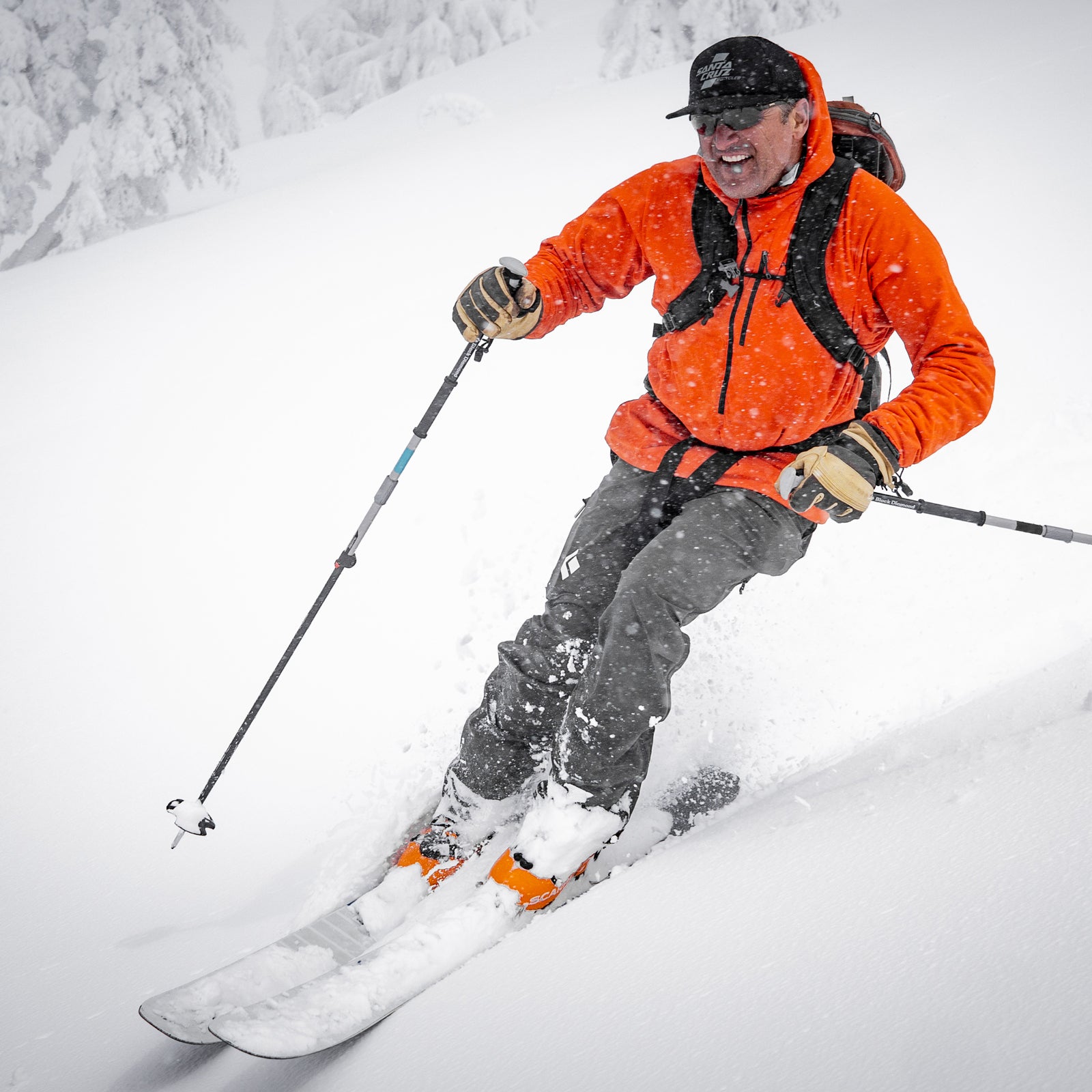My old buddy Rick Stock is retiring after teaching college-level outdoor recreation and leadership for 27 years. His work has varied widely during that time, from being a climbing ranger at Mount Shasta, California, to rowing a poop boat down the Grand Canyon. When I asked him what his most reliable equipment was, his answer was quick: “ pullover. I find that to be my most durable and constantly with me piece of gear.”
Even though he’s only been using that pullover for about four years (an item that currently isn’t for sale but was part of the still popular Nano-Air line, which offers a full-zip jacket, hoodie, and vest), the insulating layer’s extreme versatility has allowed Stock—who is in the field over 300 days annually—to age it in dog years. “I wear it under my drysuit. I wear it on my motorcycle. I have worn it mountaineering as a wind jacket when I had nothing else, and it worked for that,” he says. “It keeps me warm in some pretty cold temperatures, but at the same time, I can wear it mountain biking on a day that isn’t miserably cold, and I won’t overheat. I’m amazed at the temperature range.”
While Patagonia has made it difficult to keep track of the number of iterations in its Nano-Air line, I have personally found that the insulation and face-fabric technology feel more like magic than engineering during tests. I still have my original purple Nano-Air jacket from 2014, and, ahem, was the one to suggest Stock purchase a Nano-Air piece, too.
To find out what makes this particular line so insanely versatile, I spoke with Kristo Torgersen, global product director for Patagonia’s alpine and snow divisions. He says that their goal with the first Nano-Air product was to solve a problem that no other jackets were addressing at the time: how to produce “stretchy, highly breathable—but also durable, water-repellent—insulation,” he says.
Breathability and durability are usually competing attributes in jackets, but Patagonia was able to work around it by creating FullRange Insulation, which is made of a single extruded strand of synthetic material that binds together in one sheet. It remains extremely stable in the jacket, with minimal stitching to keeping it in place. “The key for us was working with continuous insulation. We knew that if we wanted to make a jacket and have it be breathable while using insulation, it would have to be migration resistant,” Torgersen says. “The same kind of fibers in the insulation that make it durable also give it that resiliency to stretch and come back to its original shape.”
The construction’s durability has allowed Stock to absolutely punish his Nano-Air pullover with hundreds and hundreds of uses. Most notably, in winter 2018, he used it on a 1,200-mile, eight-day, self-supported dirt-biking trip in Baja, Mexico—two-thirds of which took place on singletrack. “I brought it along and ended up wearing it nearly all day, every day, and at night. It ended up being my everything—on the bike, sleeping in it in the dirt. It stunk and it was dirty when I was done, but once I washed it, it was the same afterward,” he says.
The same attributes that let the Nano-Air jacket stretch and recover make it easily washable. “We found a way to stitch this as minimally as possible so it wouldn’t get beat up in the wash. The stitching was definitely a structure, design, and engineering feat,” says Torgersen.
The stretch that Stock loves adds to the jacket’s durability, according to Torgersen. “A garment that stretches can be more resilient than one that is static,” he says. “We see this a lot in shells. It’s hard to tear a shell but easy to puncture one. Stretch fabrics have this new resilience—if you puncture it, you can pull that saguaro cactus needle out, and the yarns find their way back to where they were before. If you had a static or shell fabric, you would have a hole there permanently.”
The Nano-Air pullover is a special piece. On top of being extremely durable, its versatility across sports and temperatures means it can potentially take the place of two jackets in your closet, so you can purchase even less gear but still be comfortable outside. I’m really happy I suggested Stock get one years ago. I'm happy to suggest you get one from that line as well.


